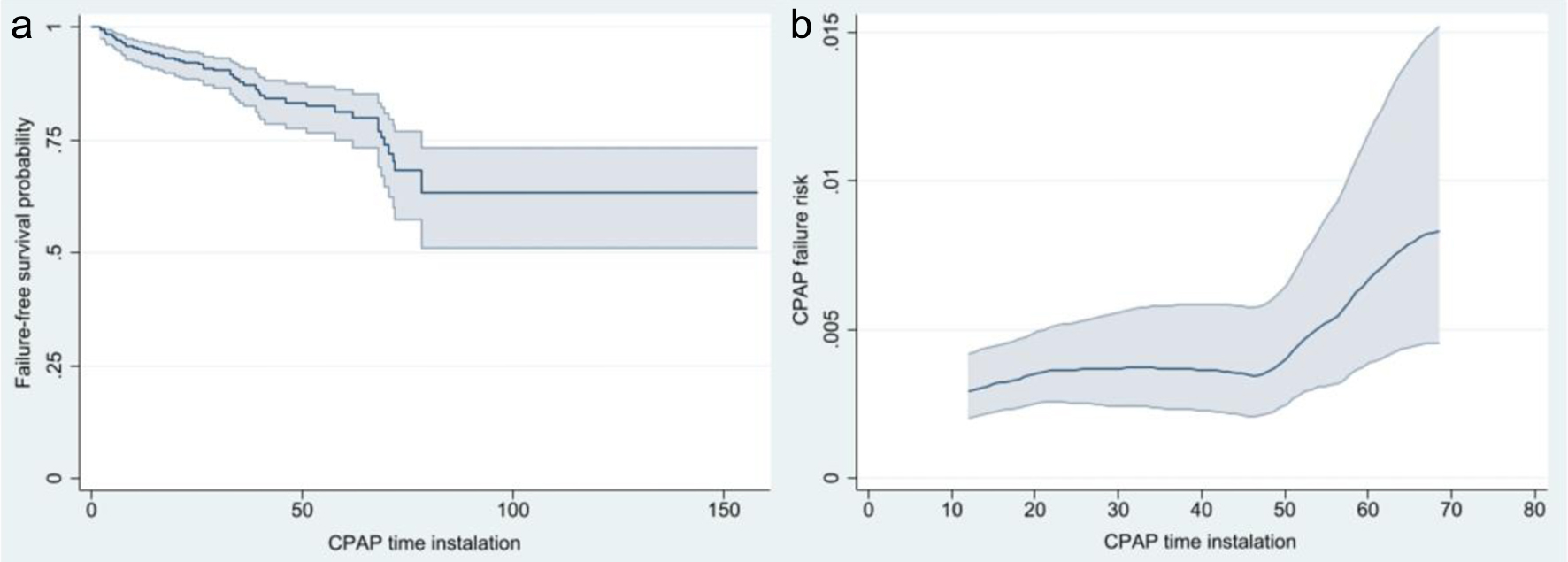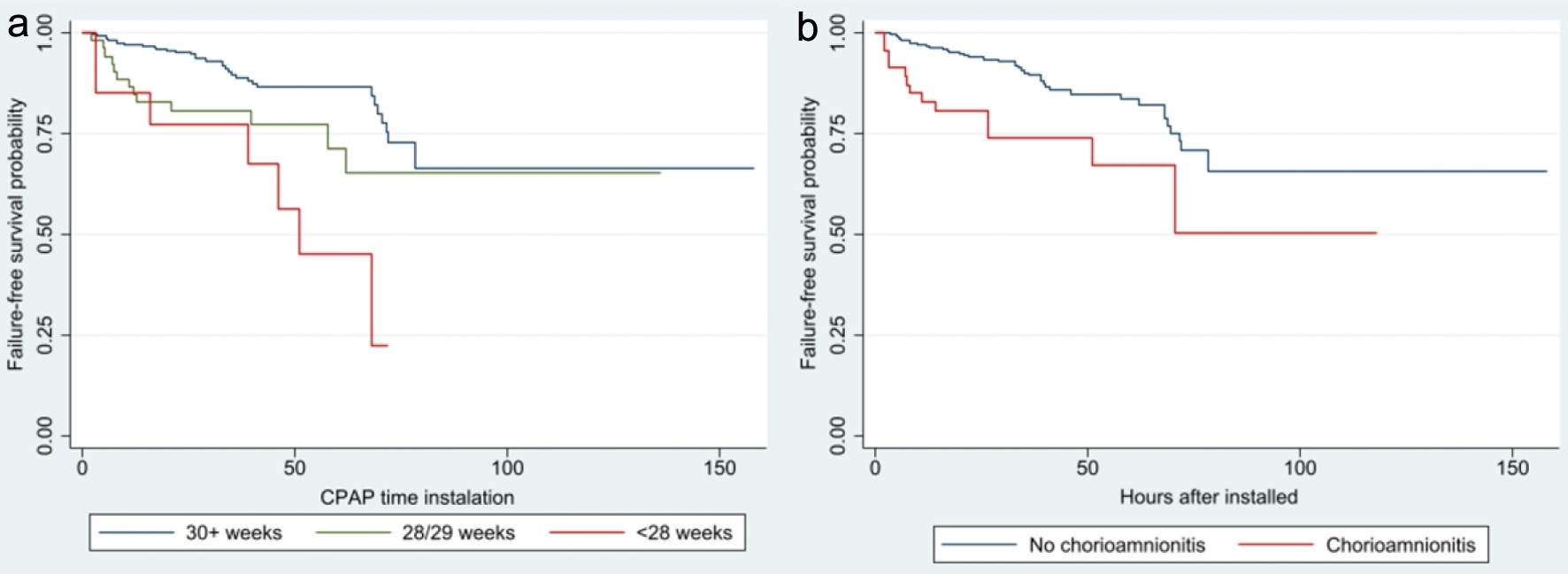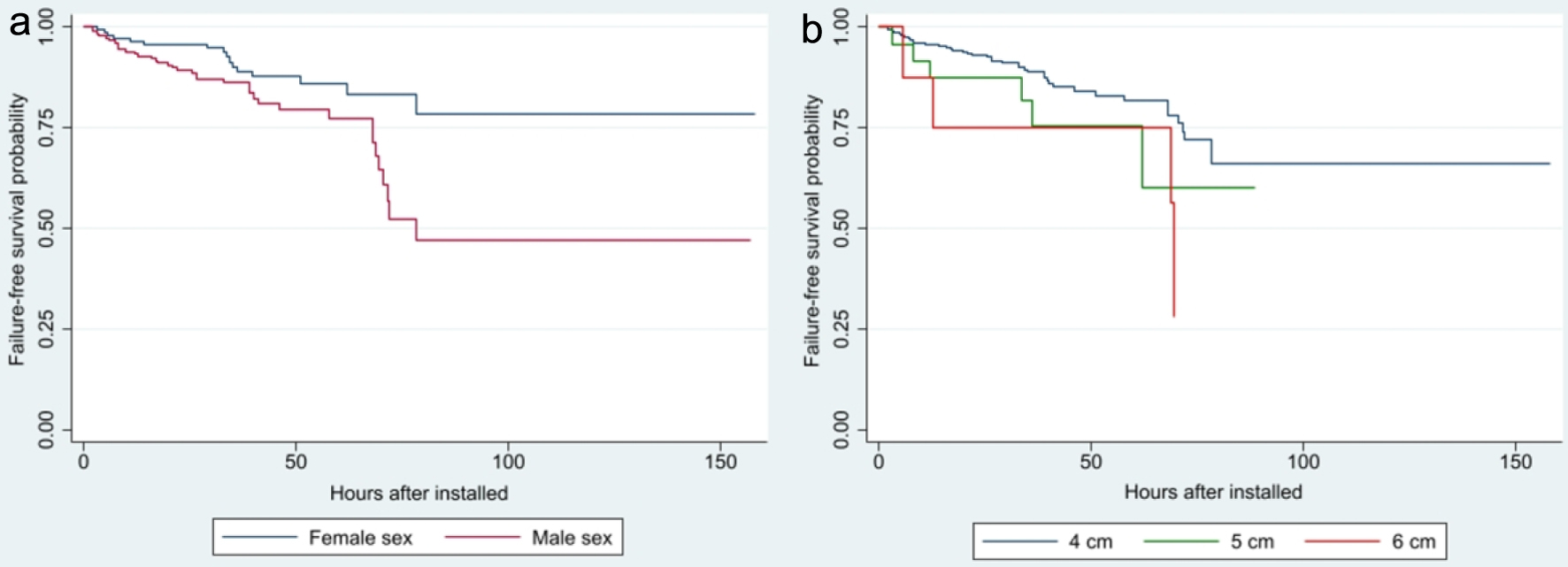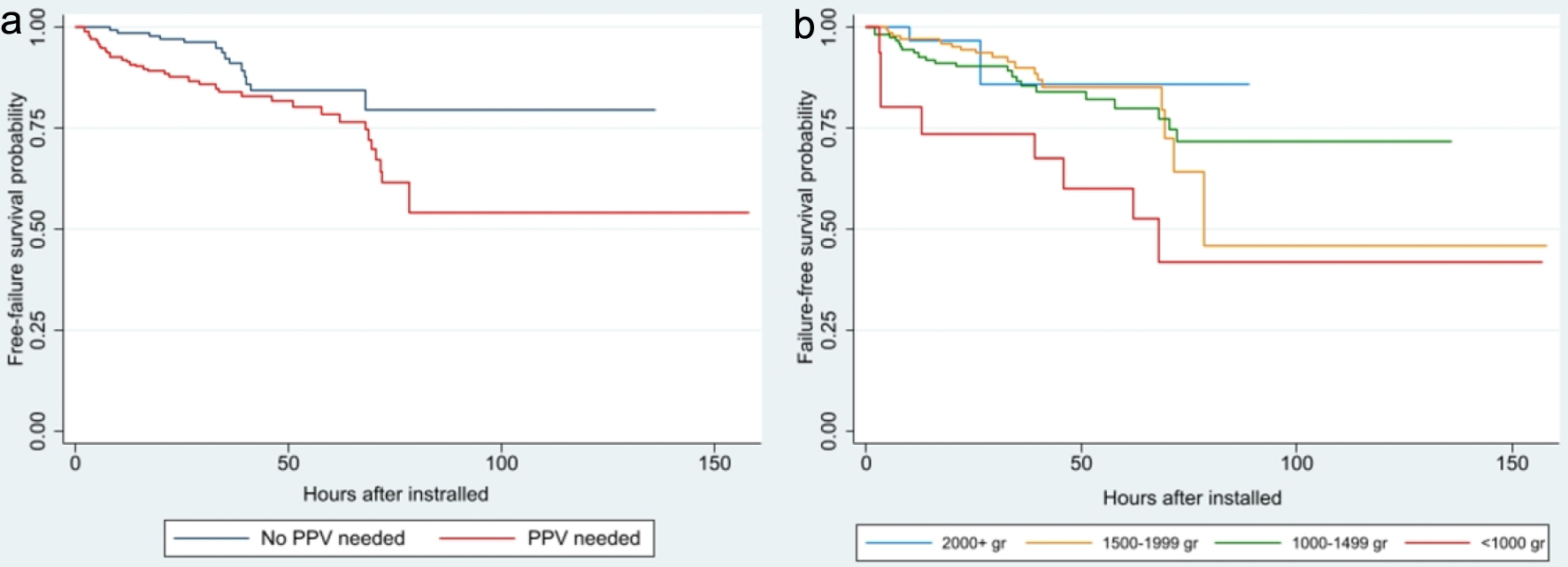
Figure 1. Risk of survival free of CPAP failure (a) and risk of CPAP failure with corresponding 95% confidence intervals (b). CPAP: continuous positive airway pressure.
| International Journal of Clinical Pediatrics, ISSN 1927-1255 print, 1927-1263 online, Open Access |
| Article copyright, the authors; Journal compilation copyright, Int J Clin Pediatr and Elmer Press Inc |
| Journal website https://www.theijcp.org |
Original Article
Volume 13, Number 2, June 2024, pages 41-47
Risk Factors Associated With Early-Selective Bubble Nasal Continuous Positive Airway Pressure and Surfactant Failure in Premature Infants With Respiratory Distress Syndrome
Figures




Tables
| Variable | Category | Failure (%)a | P-value |
|---|---|---|---|
| aFailure with early-selective BnCPAP and INSURE. BnCPAP: bubble nasal continuous positive airway pressure; PROM: premature rupture of membranes. | |||
| Delivery | Vaginal | 13/73 (17.8%) | 0.522 |
| C-section | 40/271 (14.8%) | ||
| Gestational age (weeks) | < 28 | 7/15 (46.7%) | 0.001 |
| 28 - 29.6 | 13/60 (21.7%) | ||
| ≥ 30 | 33/269 (123%) | ||
| Maternal diabetes | Yes | 1/6 (16.7%) | 0.931 |
| No | 52/338 (15.4%) | ||
| Pregnancy hypertensive disorder | Yes | 13/83 (15.7%) | 0.941 |
| No | 40/261 (15.4%) | ||
| PROM | Yes | 8/69 (11.6%) | 0.326 |
| No | 45/275 (16.4%) | ||
| Urinary tract infection | Yes | 9/39 (23.0%) | 0.159 |
| No | 44/305 (14.4%) | ||
| Chorioamnionitis | Yes | 13/49 (26.5%) | 0.020 |
| No | 40/295 (13.6%) | ||
| Antenatal corticoids course | None | 19/112 (17.0%) | 0.667 |
| Incomplete | 19/113 (16.8%) | ||
| Complete | 15/119 (12.6%) | ||
| Variable | Category | Failure (%)a | P-value |
|---|---|---|---|
| aFailure on early-selective BnCPAP and INSURE. BnCPAP: bubble nasal continuous positive airway pressure; GA: gestational age. | |||
| Failure yeara | < 2008 | 23/104 (22.0%) | 0.270 |
| 2009 - 2011 | 18/132 (13.6%) | ||
| > 2012 | 12/108 (11.0%) | ||
| Birth weight (g) | < 1,000 | 8/18 (44.4%) | 0.003 |
| 1,000 - 1,499 | 22/132 (16.7%) | ||
| 1,500 - 1,999 | 20/161 (12.4%) | ||
| ≥ 2,000 | 3/33 (9.1%) | ||
| According to GA | Adequate | 48/320 (15.0%) | 0.595 |
| Small | 3/17 (17.7%) | ||
| Large | 2/7 (17.7%) | ||
| Sex | Female | 16/146 (11.0%) | 0.055 |
| Male | 37/198 (18.7%) | ||
| Variable | Category | INSURE failure | P-value |
|---|---|---|---|
| CC: chest compression; PEEP: positive end-expiratory pressure; PPV: positive pressure ventilation. | |||
| Apgar score at 5 min | 7 - 10 | 49/328 (15.0%) | 0.276 |
| 4 - 6 | 4/16 (25.0%) | ||
| Need for resuscitation | None | 14/154 (9.1%) | 0.009 |
| PPV only | 36/178 (20.2%) | ||
| PPV + CC | 1/8 (12.5%) | ||
| PPV + CC + medication | 2/4 (50.0%) | ||
| Pneumonia | Yes | 17/68 (25.0%) | 0.014 |
| No | 36/276 (13.0%) | ||
| Initial PEEP (cm H2O) | 4 | 43/308 (14.0%) | 0.043 |
| 5 | 6/26 (23.0%) | ||
| 6 | 4/10 (40.0%) | ||
| Secondary outcome | Total patients (n = 344) | INSURE outcome | P-value | |
|---|---|---|---|---|
| Success (n = 291) | Failure (n = 53) | |||
| IVH: intraventricular hemorrhage; NEC: necrotizing enterocolitis. | ||||
| Chronic pneumopathy | 48 (14.0%) | 37 (12.7%) | 11 (20.7%) | 0.120 |
| IVH grade III or IV | 6 (1.7%) | 1 (0.3%) | 5 (9.4%) | < 0.001 |
| NEC | 17(4.5%) | 15 (5.1%) | 2 (3.7%) | 0.670 |
| Air leak syndrome | 7 (2.0%) | 5 (1.7%) | 2 (3.8%) | 0.330 |
| Sepsis | 100 (29.1%) | 80 (27.5%) | 20 (37.7%) | 0.131 |
| Death | 20 (5.8%) | 14 (4.8%) | 6 (11.3%) | 0.063 |